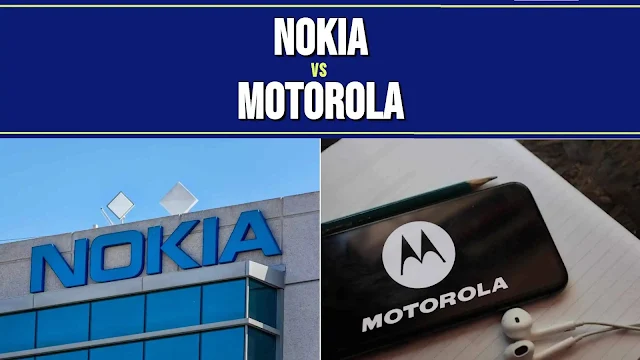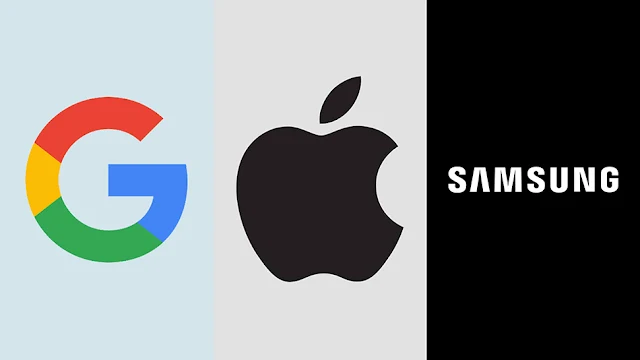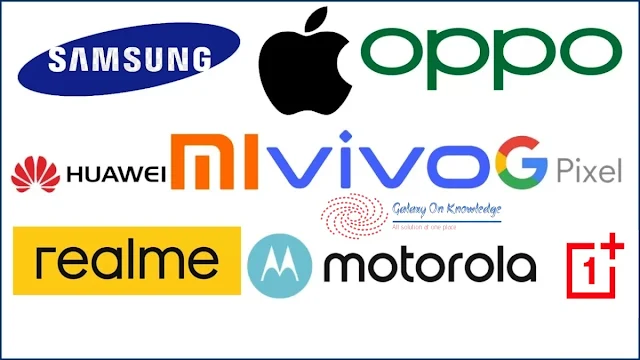Introduction To the Smartphone Market: Trends and Competitive Analysis
The smartphone market continues to evolve rapidly, characterized by fierce competition and rapid technological advancements. Dominated by a few global giants, the industry is marked by innovations in design, functionality, and connectivity. Companies are increasingly focusing on integrating artificial intelligence, enhancing camera capabilities, and improving battery life to attract consumers. With emerging markets driving significant growth, the competitive landscape remains dynamic, pushing brands to constantly innovate and adapt to changing consumer preferences.
Evaluating Market Leaders and Brand Value: Apple, Samsung, And Huawei
In evaluating market leaders and brand value among mobile companies, Apple, Samsung, and Huawei stand out prominently. Apple's brand is synonymous with innovation and premium quality, maintaining a steadfast consumer loyalty and high market share. Samsung excels with its diverse product range and technological advancements, securing a strong global presence. Huawei, despite geopolitical challenges, continues to showcase resilience and innovation, especially in emerging markets, contributing significantly to its brand value and market position.
Technological Innovation and User Experience: Google, OnePlus, And Xiaomi
Google, OnePlus, and Xiaomi each contribute uniquely to technological innovation and user experience in the mobile industry. Google distinguishes itself with seamless Android integration and constant software updates, enhancing user interaction. OnePlus combines powerful hardware with its OxygenOS, known for its smooth performance and customization options. Xiaomi excels in offering cutting-edge features at competitive prices, often incorporating advanced technologies that enhance user accessibility and satisfaction, thereby maintaining strong customer loyalty.
Global Sales and Market Share Insights: Role of Oppo, VIVO, And RealMe
In recent years, Oppo, VIVO, and RealMe have significantly impacted global mobile sales and market share. Known for their innovative technology and competitive pricing, these brands have capitalized on expanding markets like India and Southeast Asia. Oppo and VIVO have focused on camera and display advancements, capturing substantial market shares, while RealMe's rapid growth is fueled by its focus on budget-friendly devices.
Together, they've reshaped competition, challenging established players worldwide.
Expansion Strategies and Product Launches: Motorola, Nokia, And Their Global Reach
Motorola and Nokia have deployed diverse expansion strategies and product launches to solidify their global reach. Motorola has focused on competitively priced smartphones with innovative features, aiming to capture emerging markets. Its strategic partnerships and focus on 5G technology have been pivotal. Nokia, leveraging its strong brand heritage, emphasizes robust design and reliability, expanding through collaborations and bolstering market presence. Both companies strategically target diverse demographics to enhance their global reach.
Future Horizons: Foldable Phones, Eco-Friendly Devices, and New Operating Systems
As the mobile industry evolves, a focus on future horizons highlights the growing impact of foldable phones, which promise to redefine user experiences with their versatile designs. Eco-friendly devices are becoming increasingly important, as companies strive to reduce their carbon footprint through sustainable materials and energy-efficient technology. Meanwhile, new operating systems are emerging, offering innovative features and improved security, further driving competition and shaping the future landscape of mobile technology.
5G Technology Impact on Top Mobile Brands: Samsung, Huawei, And Qualcomm
The impact of 5G technology on top mobile brands like Samsung, Huawei, and Qualcomm has been transformative. These companies have rapidly advanced their technology to support 5G, enhancing their competitive edge. Samsung has integrated 5G into its flagship devices, boosting performance and user experience. Huawei, despite facing global challenges, has remained a leader in 5G infrastructure. Qualcomm's 5G chipsets have empowered a wide range of devices, cementing its role as a critical player in mobile innovation.
Consumer Ratings and Loyalty: How Top Brands Stack Up
In evaluating consumer ratings and loyalty among top mobile companies, several factors come to the forefront, including brand reputation, customer satisfaction, and after-sales support. Companies that consistently innovate tend to inspire strong consumer loyalty. Apple and Samsung often lead in consumer satisfaction, thanks to their cutting-edge design and robust ecosystems. Meanwhile, brands like Xiaomi and OnePlus attract loyalty by offering high-value alternatives.
Ultimately, consumer loyalty hinges on product reliability, brand trust, and customer engagement.
Flagship Models Showdown: Comparing Google, Apple, And Samsung
In the flagship models showdown, Google, Apple, and Samsung each bring cutting-edge technology and innovation to the table. Google's latest Pixel integrates AI features and exceptional camera capabilities. Apple's iPhone impresses with its sleek design, powerful performance, and seamless ecosystem. Samsung's Galaxy lineup offers stunning displays and versatile functionality, setting benchmarks in mobile technology. Each brand caters to distinct user preferences while pushing boundaries with their flagship offerings.
Network Compatibility and Operating Systems: Android Vs iOS Dominance
In the realm of mobile companies, the battle between Android and iOS dominates the landscape of network compatibility and operating systems. Android is favored for its open-source nature and compatibility with a vast array of devices across different price points, allowing for extensive customization. Conversely, iOS is celebrated for its seamless integration, heightened security, and consistent performance across Apple's devices. This ongoing rivalry drives innovation and shapes user preferences globally.
When comparing Android and iOS, determining which one is the best largely depends on individual preferences and needs. Android is known for its open-source nature, allowing for greater customization and flexibility in terms of app choices and device options. On the other hand, iOS is praised for its seamless integration with other Apple products, consistent user experience, and strong commitment to privacy and security.
Professionals often choose iOS for its reliability and
top-notch performance, ideal for business settings that require smooth
operation and high-end security measures. Android, with its vast array
of customization options and the ability to cater to various budgets,
remains a popular choice for those seeking versatility and a more open
system. Ultimately, the best choice between Android and iOS is
subjective and depends on the user's specific requirements and
preferences, each offering distinct advantages based on individual
needs.
Battery Life and Camera Quality: Key Deciding Factors for Consumers
When it comes to choosing a mobile phone, battery life and camera quality often play crucial roles in consumer decision-making. A robust battery ensures that the phone can last through a busy day without frequent recharging, making it a vital feature for on-the-go users. Meanwhile, high-quality cameras have become essential as smartphones increasingly replace traditional cameras, allowing consumers to capture stunning photos and videos with advanced features and capabilities.
Display Technology Advances by OnePlus, Samsung, and Xiaomi
In the realm of display technology, OnePlus, Samsung, and Xiaomi have each made significant strides. OnePlus champions fluid AMOLED displays with high refresh rates for smoother interactions. Samsung continually leads with its vibrant and sharp AMOLED screens, offering excellent color accuracy and reduced power consumption. Xiaomi pushes boundaries with innovative display technologies, focusing on cost-effective yet high-quality panels, often incorporating HDR and superior brightness in their flagship models for vivid visual experiences.
Price Range Analysis: From Budget to Premium Smartphones
The smartphone market offers a diverse price range, catering to various budget preferences. Budget smartphones, generally priced under $200, provide essential features for cost-conscious buyers. Mid-range models, spanning $200 to $600, balance performance and affordability, appealing to a broader audience. Premium smartphones, exceeding $600, boast advanced technology, superior build quality, and innovative features, targeting tech enthusiasts and professionals. Each segment plays a crucial role in shaping consumer choices and influencing mobile company rankings.
Revenue Growth Trajectories of Oppo, VIVO, And RealMe
Oppo, VIVO, and RealMe have experienced notable revenue growth trajectories in the competitive mobile industry. Oppo's strategic market expansion and focus on innovation have driven consistent growth. VIVO's diverse product range and strong marketing have enabled it to capture significant market share, particularly in Asia. RealMe, a relatively new entrant, has rapidly gained traction with its affordable yet feature-rich smartphones, leveraging aggressive online marketing and tapping into emerging markets for substantial growth.
Brand Value Enhancement Through Eco-Friendly Devices
As the mobile industry faces mounting scrutiny over environmental impacts, leading companies are bolstering their brand value by committing to eco-friendly devices. By investing in sustainable materials, energy-efficient manufacturing processes, and recycling initiatives, these brands are not only reducing their carbon footprint but also appealing to an increasingly eco-conscious consumer base. This strategic focus on sustainability enhances brand perception, fostering customer loyalty and differentiating them from competitors in a rapidly evolving market.
Customer-Centric Approaches by Motorola and Nokia
Motorola and Nokia have consistently prioritized customer-centric approaches by focusing on enhancing user experiences and understanding consumer needs. Motorola has reintroduced beloved, adaptable features through modern innovations, leveraging community feedback. Meanwhile, Nokia emphasizes affordability and durability, ensuring access to high-quality devices for diverse markets. Both companies invest in extensive customer support and frequent updates to address user concerns, fostering loyalty and trust in an ever-evolving mobile landscape.
Top 10 Rankings: Comprehensive Assessment of The Smartphone Market
In the ever-evolving smartphone market, the top 10 rankings provide a comprehensive assessment of industry leaders. Companies like Apple and Samsung continue to dominate due to their innovation and brand loyalty, while Chinese manufacturers like Xiaomi, Oppo, and VIVO have gained traction with cost-effective, feature-rich models. Emerging players such as RealMe and OnePlus are rapidly climbing the ranks, highlighting the competitive nature of the market as consumer preferences evolve and expand.
Which Mobile is No 1 in World?
As of recent reports, the title of the leading mobile company in the world consistently belongs to Samsung. Known for its innovative technology, diverse range of products, and global market reach, Samsung has maintained its position by delivering high-quality smartphones that cater to various consumer needs. Its flagship Galaxy series, combining cutting-edge features with sleek design, has played a significant role in solidifying Samsung's status as the dominant force in the global smartphone market.
Who is the King of Smartphones?
In the competitive landscape of smartphones, Apple consistently holds the crown as the industry leader. Known for its innovative technology and sleek design, the iPhone series captivates millions worldwide, setting new standards in the mobile arena. With cutting-edge features and a robust ecosystem, Apple commands loyalty among consumers, driving significant market share and revenue. Its relentless pursuit of perfection continues to reinforce its dominance, making Apple the undisputed king of smartphones.
Which Phone Brand is the Best?
Determining the best phone brand depends largely on individual preferences and priorities. Apple and Samsung consistently lead with innovative technology and design, offering premium features and reliability. Brands like Xiaomi and OnePlus provide high performance at competitive prices, appealing to budget-conscious consumers. Google's Pixel phones are renowned for their exceptional camera quality and seamless integration with Android. Ultimately, the best brand aligns with specific user needs, whether it's performance, affordability, or ecosystem integration.













